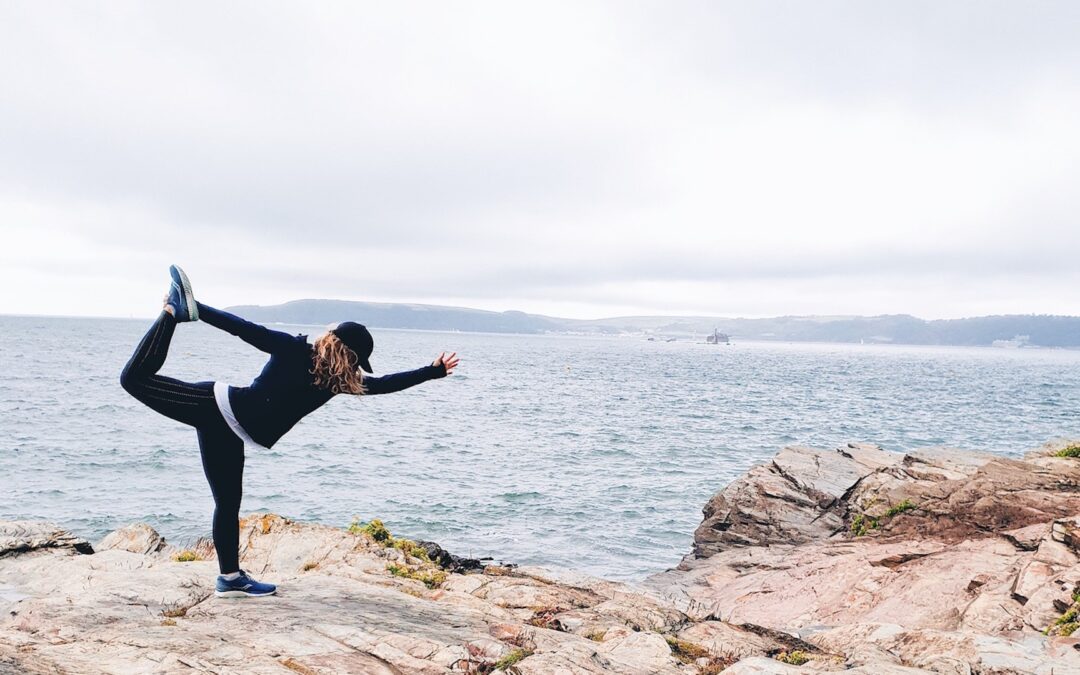How yoga can ease post-lockdown anxiety
Lockdown has lifted for most areas and life has returned to a slightly different ‘normal’. Great news… But not for some.
If the thought of going back to work, browsing in shops on busy high streets, or even flying away for a holiday has you less than excited, then you’re not alone.
It’s called re-entry anxiety:
It’s the anxiety that comes with the thought of doing things we once considered normal. There’s a great article by Mind, a mental health charity in the UK, which further explains the anxiety caused down lockdown-easing. The Mental Health Foundation now also have some guidance here.
There are usually two causes: the first is anxiety around leaving the house and contracting COVID-19, and the second is anxiety around socialising, returning to old routines and perhaps even back to something we no longer want.
For months, we lived a new, simpler way of life and we were told ‘stay home, stay safe’. As we are encouraged to leave our homes again, now we are having to reverse that mentality and that message. So whilst we might want to see friends and family, for many our natural instinct is now also reluctance, worry and anxiety.
Two things come up repeatedly in advice on dealing with re-entry anxiety: staying in the present moment, and breath work. Here’s how yoga can help with both.

Being present
Have you found yourself worrying about things you can’t control? Yoga is all about awareness, about pausing and listening to what’s going on internally so you can know yourself better. Once you start to cultivate a sense of self-awareness, it’s much easier to notice when your mind has skipped ahead to the future or is worrying about the past.
Practising meditation like we do at the beginning and end of our yoga sessions develops our ability to notice when our minds wander, and therefore makes it easier to steer ourselves back to the present moment and back to what we can control: how and what we feel in the here and now.
Next time in your daily life you notice your thoughts drifting, try applying some of the meditation techniques we use in sessions to bring you back.
Even just noticing that your mind has drifted is a significant step. Then grounding yourself in your senses, in sounds, feelings and sensations is a great way to start. And of course, taking a deep breath…

Breath work
Developing breath awareness is a fundamental part of yoga. Once we are more in tune with our own rhythm can we start to notice when it changes and begin to control it, not just in our physical movement but in our daily activities.
Breathing helps to trigger the parasympathetic nervous system, our rest and digest mode, and deactivates the sympathetic nervous system, our stress response. It promotes our fight or flight mode which is often activated when we are feeling anxious and our breathing naturally speeds up and becomes shallower.
So noticing your breath is a great way to interpret how you’re feeling, and practicing breath work can reduce stress and anxiety. It can be as simple as noticing the speed and depth of your breath, and feeling the air moving into and out of the body.
You could also try some breathing exercises, or pranayama as it’s called in yoga. For example, lengthening the inhale and/or exhale, maybe briefly holding the breath at the top of the inhale before exhaling, if this feels comfortable.
If presence and breath work is new to you, try the ideas above or search online for some simple exercises to do in your own time. Then once you’re more comfortable, joining a yoga class and using the time to focus on your breath throughout your practice is a great way not only to use the breath to ease your anxiety but will also help to bring you to the present moment as you develop your practice.
And remember if you’re struggling, talk to someone. You’ll be surprised at how many people have with re-entry anxiety – it’s completely normal given our circumstances.
Stay safe, and let me know some ways you have been coping with the changes this year.

